Nvidia’s freshly launched RTX 4060 is a GPU that arrives in a tricky spot. It’s far from being among the best graphics cards you could buy, and yet, it’s cheap enough that it still looks like a good option … but looks can be deceiving.
Based on previous generations, the RTX 4060 should be the go-to GPU for most users, but things have changed. In fact, there are several graphics cards that simply make more sense right now — I’ll show you five of them below.
A midrange GPU or a vessel for DLSS 3?

Before we dive in, let’s take a quick look at the RTX 4060. Nvidia’s latest midrange GPU costs $300 and comes with a peculiar set of specifications.
It’s weaker than its predecessor in some ways, but it makes up for it in others. For example, although the RTX 4060 is significantly cut down in terms of cores (3,584 versus 3,072), it also has a much larger L2 cache (24MB versus 3MB) and it consumes a lot less power than the RTX 3060 (115W versus 170W). You win some, you lose some.
Perhaps the biggest loss for the RTX 4060 stems from the bus width and the memory size. It only has 8GB of GDDR6 VRAM across a 128-bit bus, whereas the RTX 3060 rocks a much more reasonable 12GB and a 192-bit bus. As we now know, 8GB of VRAM is not going to suffice for the years to come, as some GPUs are already struggling to run modern games at a decent level.
With that said, the larger cache makes up for it and the RTX 4060 usually outperforms its predecessor, with gains reaching up to 20%. However, it falls behind the RTX 3060 Ti, and that’s still a little disappointing.
Of course, the RTX 4060 has something that many graphics cards do not — Nvidia’s unicorn of an upscaling technology, the DLSS 3. Nvidia’s frame generation can do a lot for these lower-tier cards that really need it, and DLSS 3 certainly does its job for the RTX 4060, elevating it significantly in the games that support it.
However, the card’s somewhat lackluster performance without DLSS 3 does make you wonder if it’s little more than a vessel meant to carry next-gen features with last-gen performance. In a way, DLSS 3 seems to be the only thing capable of making this GPU truly stand out from the crowd.
This brings us to my next point — the RTX 4060 just might have too much competition right now, which is bad news for Nvidia, but great news for you.
Surrounded by competition
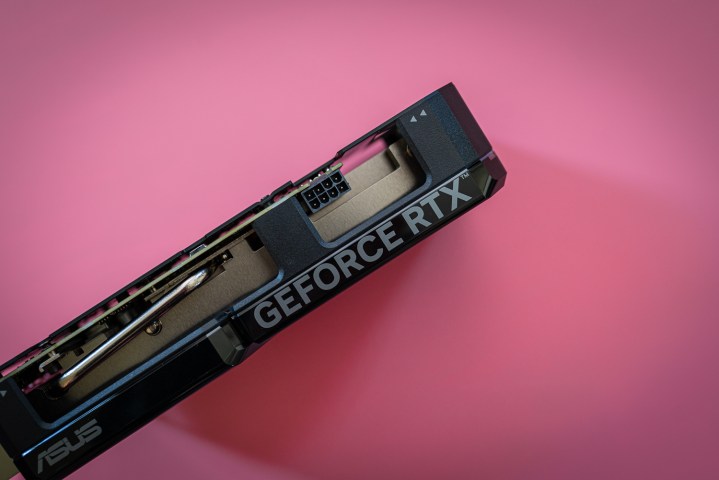
The RTX 4060 faces fierce competition from all three GPU makers — that’s right, even the often-forgotten Intel is a force to be reckoned with here. However, the fact that even Nvidia’s own options can be considered better makes the purchase far from obvious.
Historically, Nvidia’s xx60 graphics cards have been huge hits. This is the kind of GPU that caters to the mainstream market, which means that it’s present in a lot more PC builds than the likes of the RTX 4090.
Lots of users are still running a GTX 1060, RTX 2060, or RTX 3060 with decent results, but might be tempted to upgrade if the RTX 4060 was an interesting option. The problem is that it’s hard to recommend it when you compare it to the other models.
If the $300 RTX 4060 launched in a starved market with nothing else in this price range, it would have fared better. As things stand now, though, there are actually lots of options in a similar price range that either outperform the RTX 4060 or are cheaper, so you can take your pick.
Let’s check them out.
AMD Radeon RX 6700 XT
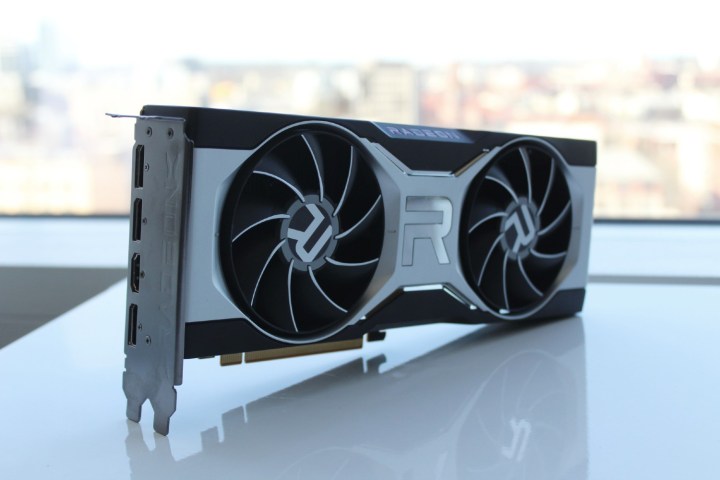
It’s no surprise that one of the greatest competitors for the RTX 4060 comes from the previous generation of GPUs. While AMD’s RDNA 3 range is quite small right now, it still has plenty of last-gen offerings in stock, and the RX 6700 XT is definitely worth thinking about.
The RX 6700 XT proved itself to be way faster than the RTX 4060 in our tests, and unlike the RTX 4060, the Team Red card can also handle itself well in a 1440p gaming scenario. It’s actually faster than the RTX 4060 Ti in some games, but it’s also considerably cheaper. Much like the RTX 3060, this GPU also sports 12GB of VRAM, meaning that it’ll be able to run some of the more demanding games with greater ease.
Buying this over the RTX 4060 means that you’ll get better performance across the board, but Nvidia remains superior if you care about ray tracing or want to take DLSS 3 out for a spin.
The prices of the RX 6700 XT can vary, but you can generally find it for around $300 to $350. It’s a great deal at the lower end of that bracket.
Nvidia GeForce RTX 3060 Ti

If you prefer Nvidia but aren’t opposed to shopping last-gen, the RTX 3060 Ti is a solid replacement for the RTX 4060. It only costs around $30 more if you find a good deal, and it has a lot to offer for that price.
In our testing, it outperforms the RTX 4060 in most games. Since this is still Nvidia, ray tracing performance should be of no concern; the RTX 3060 Ti can stand its ground in most titles. Unlike the RTX 4060, the last-gen card can do a good job at 1440p, scoring 62.9 frames per second (fps) on average.
The RTX 3060 Ti has much more cores than the RTX 4060 (4,864), although it also only sports 8GB VRAM. However, giving it a roomier 256-bit bus certainly helps it even when it’s faced with AAA games.
While you’re not getting DLSS 3 on this model, regular DLSS is still present to give you a boost here and there. It’s a solid middle ground between the RTX 4060 and the RX 6700 XT I talked about above, where you still get access to some of Nvidia’s features and improved performance, but pass on DLSS 3.
AMD Radeon RX 7600
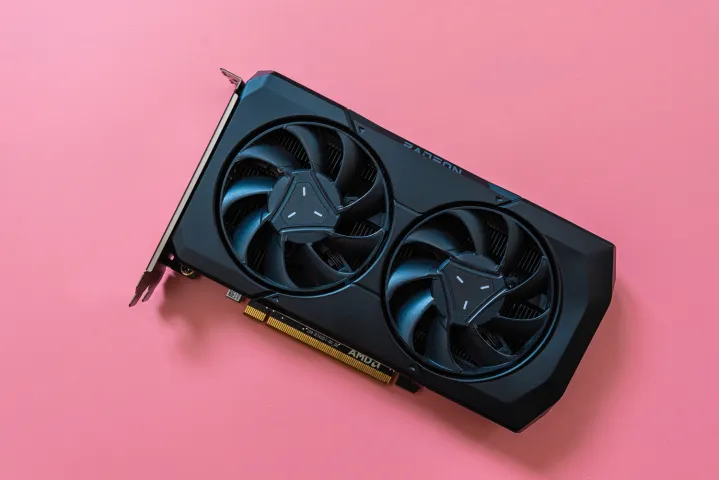
We’ve compared the RX 7600 to the RX 4060 and we found that the two GPUs go head-in-head in many scenarios, although Nvidia’s midrange GPU maintains a lead in most games. It’s a slight victory in most cases, though.
On average, the RTX 4060 is faster at 1080p, winning by around 12%. However, when you take ray tracing into consideration, the gap widens, making the RX 7600 almost 20% slower.
It’s no secret that Nvidia always leads where ray tracing is concerned, and the RTX 4060 has another card up its sleeve in the form of DLSS 3. However, if you’re not particularly concerned with those things, the RX 7600 is a cheaper alternative — you can usually find it for around $250, so it saves you $50.
Keep in mind that the RX 7600 faces the same VRAM problem as the RTX 4060, with just 8GB VRAM across a 128-bit bus. However, at a lower price point, it’s easier to justify and take it for what it is — a 1080p gaming champ.
Nvidia GeForce RTX 4060 Ti
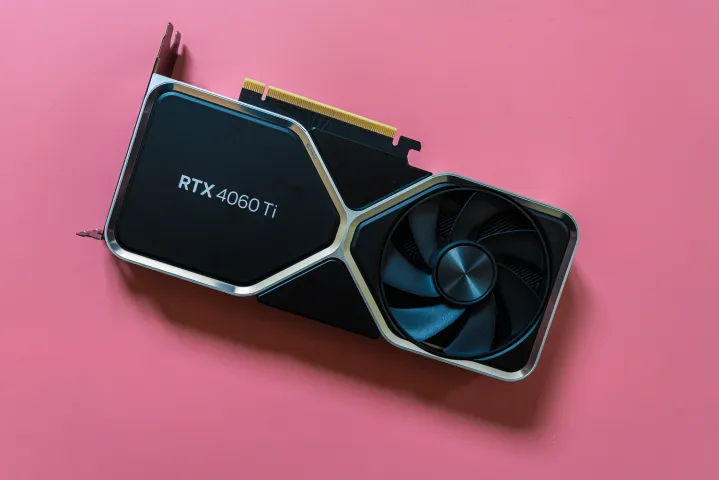
The RTX 4060 Ti is just as problematic as the RTX 4060 — perhaps even more so. It costs $400 and still deals with those same VRAM constraints. However, it shoots massively ahead in performance, so it’s the closest thing to a sizeable upgrade you can get at this price range if you’re sticking to Nvidia.
At 1080p, the RTX 4060 Ti dominates the RTX 4060 in a big way, hitting 94.1 fps on average versus 78.2 for the 4060. The lead remains significant when you move up to 1440p and the RTX 4060 Ti maintains a comfortable 68.4 fps while the cheaper variant trails behind at 54.5 fps. Simply put, it’s just a GPU that will give you more mileage and future-proofing.
Since it’s an RTX 40-series card, the 4060 Ti also gives you access to Nvidia’s bag of goodies, meaning DLSS 3. If you can spare $100 and want to try that out, this is the way to go right now. In the future, we’ll also have a $500 RTX 4060 Ti with 16GB VRAM, and that’ll likely blow both cards out of the water, but it’ll also cost a whole $200 more than the RTX 4060.
Intel Arc A770
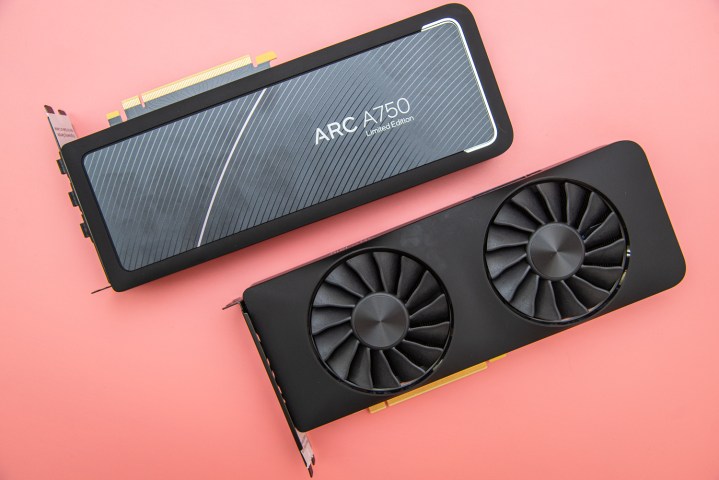
Intel’s venture into making GPUs is still new, but if you don’t mind that, you’ll actually find a lot of value in the Intel Arc A770. It had a bit of a rough start, but Intel has been hard at work fixing it from the software side, and it’s now a formidable competitor against the RTX 4060.
In our tests, Intel’s GPU fell slightly behind the RTX 4060 at 1080p, but it pulled considerably ahead at 1440p. Again, what we’re seeing here is future-proofing — the RTX 4060 is a decent card for right now, but if you want to buy a 2K monitor one day, Intel might be the better pick.
Intel’s lead is quite situational, changing from game to game, but it’s a card that presents good value. Intel does a decent job at ray tracing, performs well in most games, and you can find it for around the same price as the RTX 4060. The version with 16GB VRAM tends to be more expensive, hitting the $350 to $400 mark.
If you’re on a tight budget, the Arc A750 marks a decent alternative at $230 to $250, although Nvidia beats it every time. You’re probably better off getting the RX 7600 at that price point.




